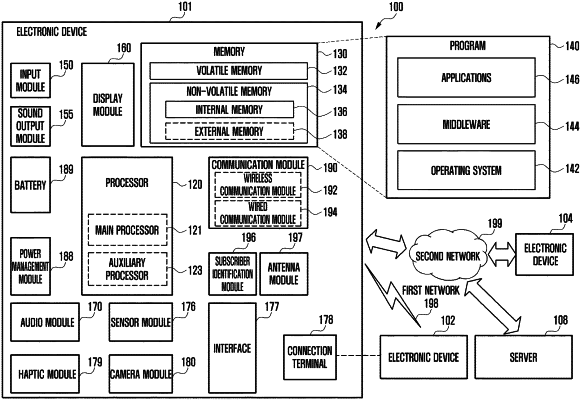| CPC B25J 9/0009 (2013.01) [B25J 5/007 (2013.01); B25J 9/126 (2013.01); B25J 13/089 (2013.01)] | 13 Claims |

|
1. An electronic device comprising:
a first device comprising
a spherical housing including an inner spherical surface and an outer spherical surface;
a first driving device disposed inside the spherical housing and configured to provide power to the spherical housing such that the spherical housing is rotated with respect to the first driving device,
a second driving device connected to the first driving device, and including a structure disposed inside the spherical housing and at least one motor configured to rotate or tilt the structure with respect to the first driving device,
at least one first magnet disposed on the structure, and
at least one first sensor disposed on the structure and facing the inner spherical surface of the spherical housing; and
a second device having a ring shape and surrounding the spherical housing to move around the outer spherical surface of the spherical housing,
when the second device comprises at least one second magnet disposed at positions to cause an attractive or repulsive force with respect to the at least one first magnet such that the second device rotates with respect to the first device, and
wherein when the second device rotates with respect to the first device, the structure of the first device moves together with the second device.
|